Dogs are the most popular pet in America. Over 65 million households have a dog, according to research from the American Pet Products Association (APPA).
But having a dog can be challenging for apartment dwellers, who must work around breed restrictions and limited space to keep a canine companion. Fortunately, there are dog breeds ideal for apartment living.
How We Found the Best Apartment Dogs
Newsweek considered a variety of factors to choose what breeds made our list. Good apartment dogs are:
- Less energetic. Dogs with lots of energy need plenty of space to run around. It’s difficult to provide enough physical and mental stimulation for highly energetic dogs in an apartment.
- Less aggressive. Dogs that live in apartments spend lots of time in small spaces. You don’t want them taking out aggression on the furniture. Aggressive dogs can also cause problems at the local dog park, where apartment pets get their exercise.
- Easier to train. Most dogs can learn to live in small apartments with training. You can teach dogs to exercise according to a schedule you set.
- Quiet. Dogs with loud barks can annoy your neighbors, causing them to lodge complaints. Fortunately, you can train naturally loud dogs to bark less.
- Not on breed restriction lists. Many landlords have lists of “banned breeds,” or dogs that tenants cannot own. There’s variation among lists, but some dogs like mastiffs and German shepherds come up frequently.
No breed scores perfectly in every category, but several dogs stand out for their ability to adapt and thrive in apartments.
Newsweek evaluated dog temperaments and energy levels based on research published in iScience. Other dog breed information follows dog breed standards from the American Kennel Club (AKC).
1. Basenji

Evrymmnt/iStock/Getty Images Plus
Size: Medium
Energy: Low
Noise: Low
Shedding: Low
Trainability: Medium
Basenjis have a short, fine coat that sheds less. They’re a hypoallergenic breed, supposedly less likely to trigger pet allergies. That can be great for allergic dog owners confined to small apartments, although there’s limited scientific evidence supporting the idea that some breeds produce fewer allergens.
Basenjis also have a reputation for being “barkless,” thanks to their unique vocal cords. They can produce other sounds, like croaking, yelping and howling.
2. Basset Hound

miss_j/iStock/Getty Images Plus
Size: Medium
Energy: Low
Noise: High
Shedding: Medium
Trainability: Medium
Basset hounds are known for their exceptional sense of smell—they were originally bred for hunting small game. Despite their hunting background, they’re gentle, affectionate and good-natured dogs that can settle into an apartment.
Basset hounds have short fur, but they still shed moderately throughout the year. Brush your hound regularly to avoid too much fur building up on the furniture.
3. Beagle
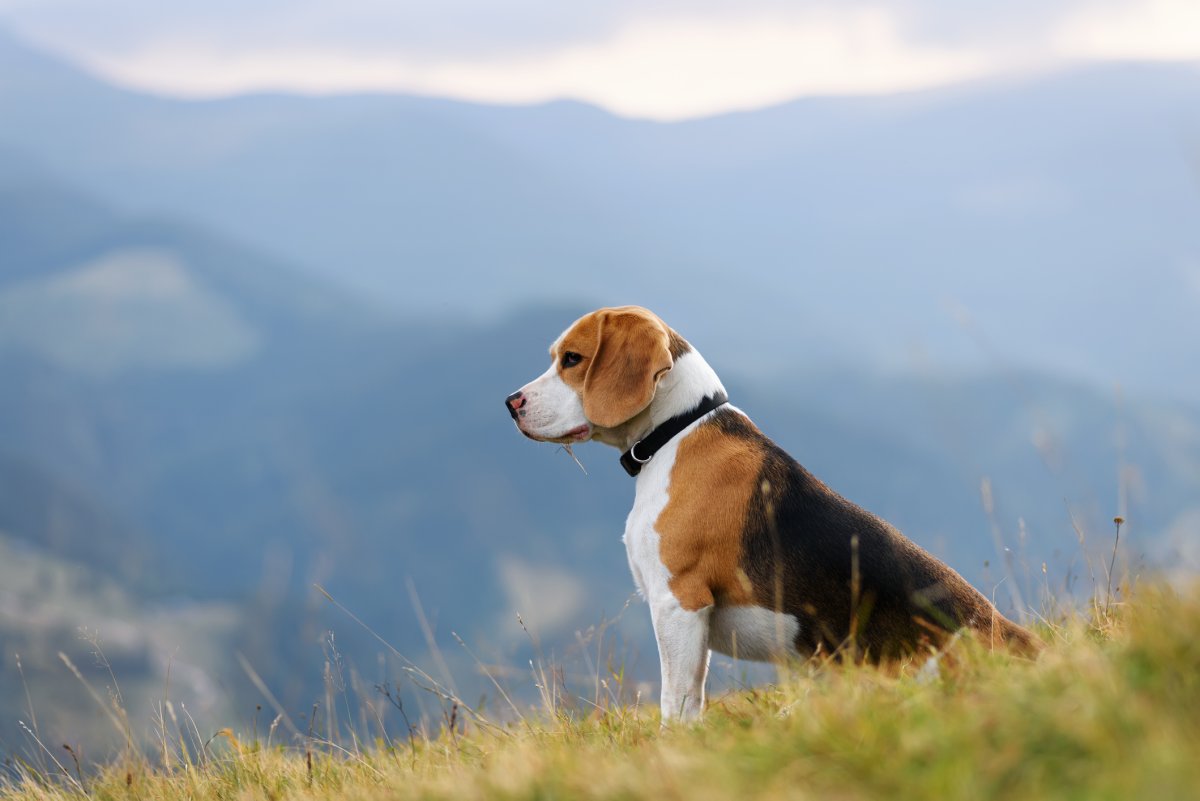
Tetiana Garkusha/iStock/Getty Images Plus
Size: Medium
Energy: Low
Noise: High
Shedding: Medium
Trainability: Medium
Beagles are social animals, getting along well with both humans and other dogs. They’ll do well at your apartment’s dog park, but they’re just as content flopping on the couch after a walk.
However, beagles’ social nature means they don’t like being left home alone. A second dog is a great idea if you’ll be out of the apartment most of the day. Just make sure you have enough room for two pups.
4. Bernese Mountain Dog
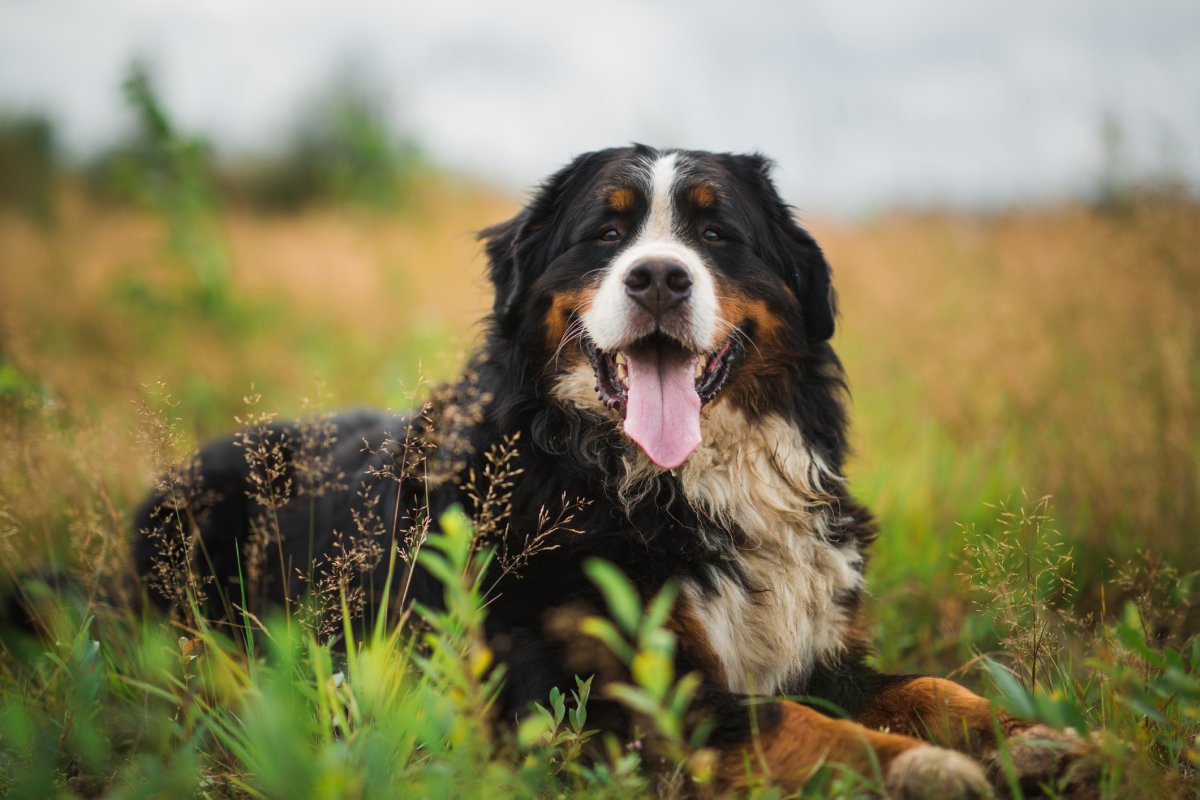
Aleksandr Zotov/iStock/Getty Images Plus
Size: Large
Energy: Low
Noise: High
Shedding: High
Trainability: Medium
Bernese mountain dogs (Berners) are a larger breed, but they can get along just fine in an apartment thanks to their laid-back and gentle temperaments. With plenty of exercise, you might mistake them for lap dogs. That’s how they think of themselves.
Berners have beautiful coats, but they can shed more than most dogs. Stay on top of their grooming routine so you don’t start finding black, white and rust-colored hair everywhere.
5. Bichon Frise

Chiemi Kumitani/iStock/Getty Images Plus
Size: Small
Energy: Low
Noise: Low
Shedding: Low
Trainability: Medium
Bichons are friendly, affectionate and playful, but their size makes it easy to burn off energy in a small apartment. These mischievous dogs love to have fun with their owners.
Bichons also have hypoallergenic coats. However, owners should plan on regular grooming and brushing to prevent matting.
6. Chinese Shar Pei
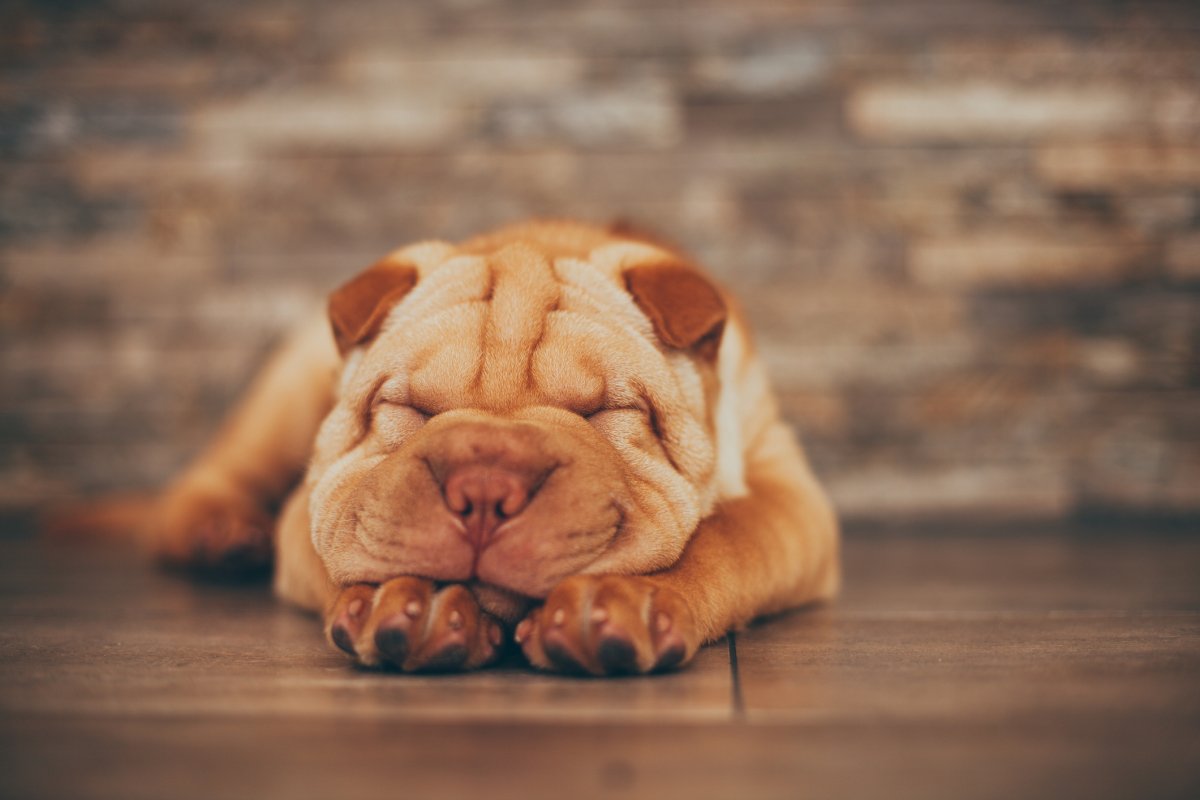
djiledesign/iStock/Getty Images Plus
Size: Medium
Energy: Low
Noise: Low
Shedding: Low
Trainability: High
That’s not a baby hippo—it’s a Chinese shar pei. These wrinkly dogs have short, bristly coats that leave minimal fur around the apartment. They’re also very quiet, so you won’t have to worry about noise complaints from your neighbors.
Chinese shar peis are also very friendly with their owners. They’ll love spending time with you in your apartment, so you don’t have to worry about giving them lots of space.
7. Coton de Tulear
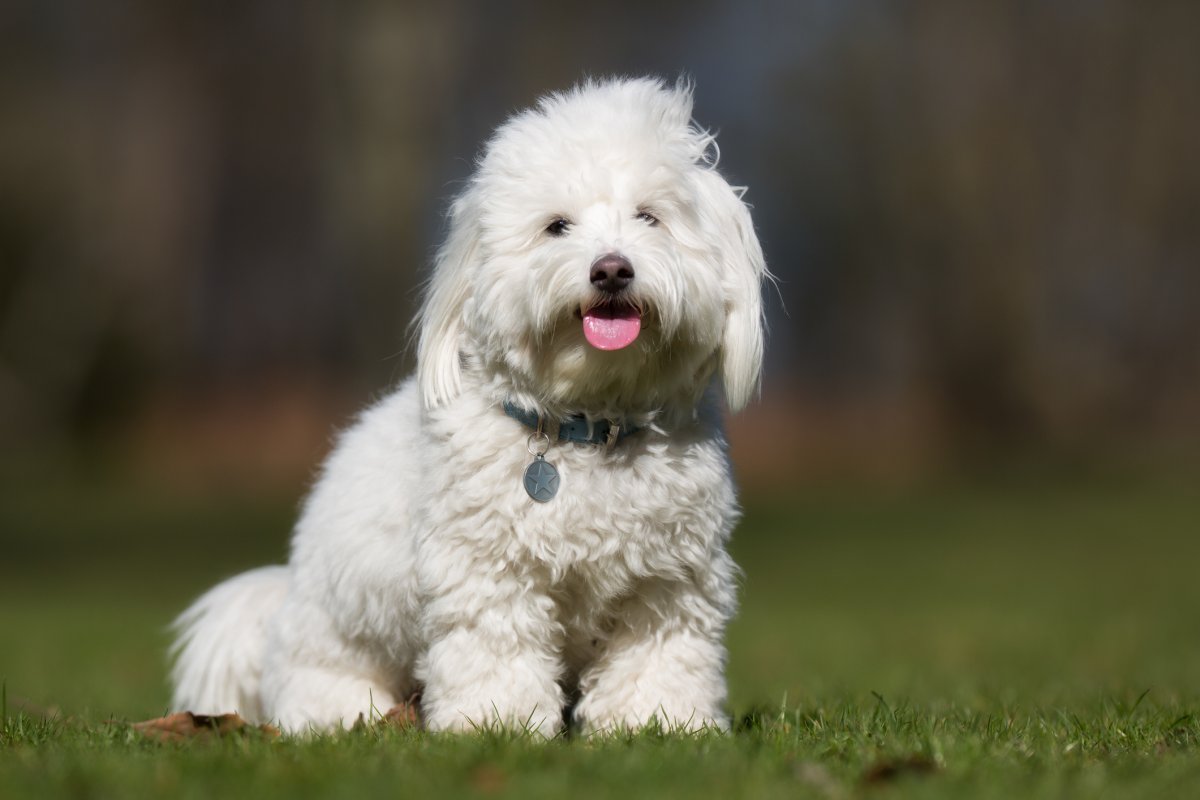
Bigandt_Photography/iStock/Getty Images Plus
Size: Small
Energy: Low
Noise: Low
Shedding: Low
Trainability: Medium
Easily mistaken for a cotton ball—hence their name—cotons are affectionate, cheerful dogs that thrive with their human companions. They enjoy spending time around the apartment and don’t need too much outdoor time.
Their fluffy coats don’t shed as much as you’d think, though they still need regular grooming to keep a healthy, white sheen.
8. Dachshund

sammcool/iStock/Getty Images Plus
Size: Small to medium
Energy: Low
Noise: High
Shedding: Medium
Trainability: Medium
Dachshunds (or wiener dogs) are famous for their long bodies and stubby legs, resembling a walking sausage. They’re curious and playful, but small enough that they’ll easily burn energy playing indoors.
These dogs come in three coat varieties: shorthaired, longhaired and wirehaired. The wirehaired dachshunds shed the most thanks to their double coats. Shorthaired dachshunds are best for apartment owners, since their short fur will be less of a nuisance indoors.
9. Finnish Lapphund

Eerik/iStock/Getty Images Plus
Size: Medium
Energy: Low
Noise: High
Shedding: High
Trainability: Medium
Originating from Finland, they were originally bred as reindeer herders. As the name suggests, they’re also affectionate lap dogs who can keep their humans company through cold winters. Today’s Finnish Lapphunds can thrive in any climate if they don’t work too hard in warm weather.
Thanks to their double coats, Finnish Lapphunds require more grooming than most breeds to keep their shedding under control.
10. Golden Retriever
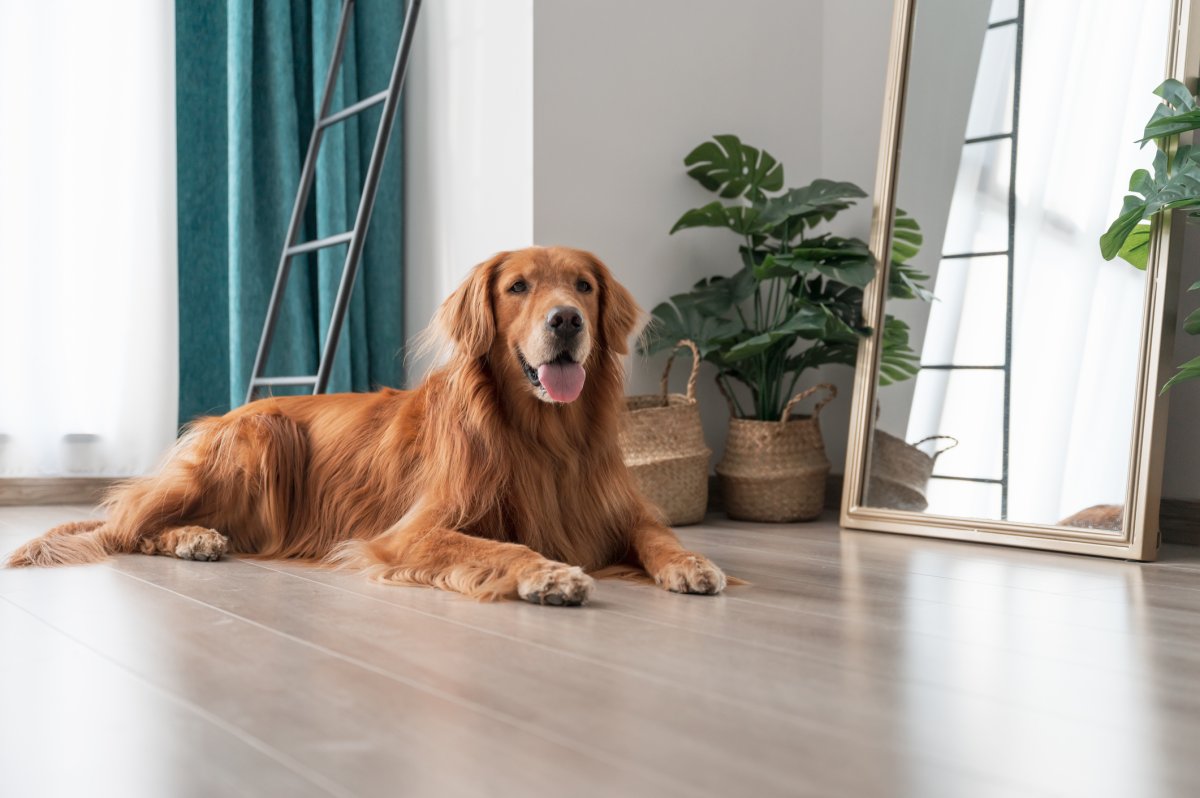
chendongshan/iStock/Getty Images Plus
Size: Large
Energy: Medium
Noise: Medium
Shedding: Medium
Trainability: High
Famous for their beautiful golden coats, these retrievers are affectionate, loyal and eager to please their masters. That eagerness makes them very receptive to training, so they can adapt to apartment life quickly.
Golden retrievers also make great family dogs thanks to their gentle nature and patience with children. They’re perfect for families living in apartments or townhomes, although they need regular walks and trips to the park to live their best lives.
11. Italian Greyhound
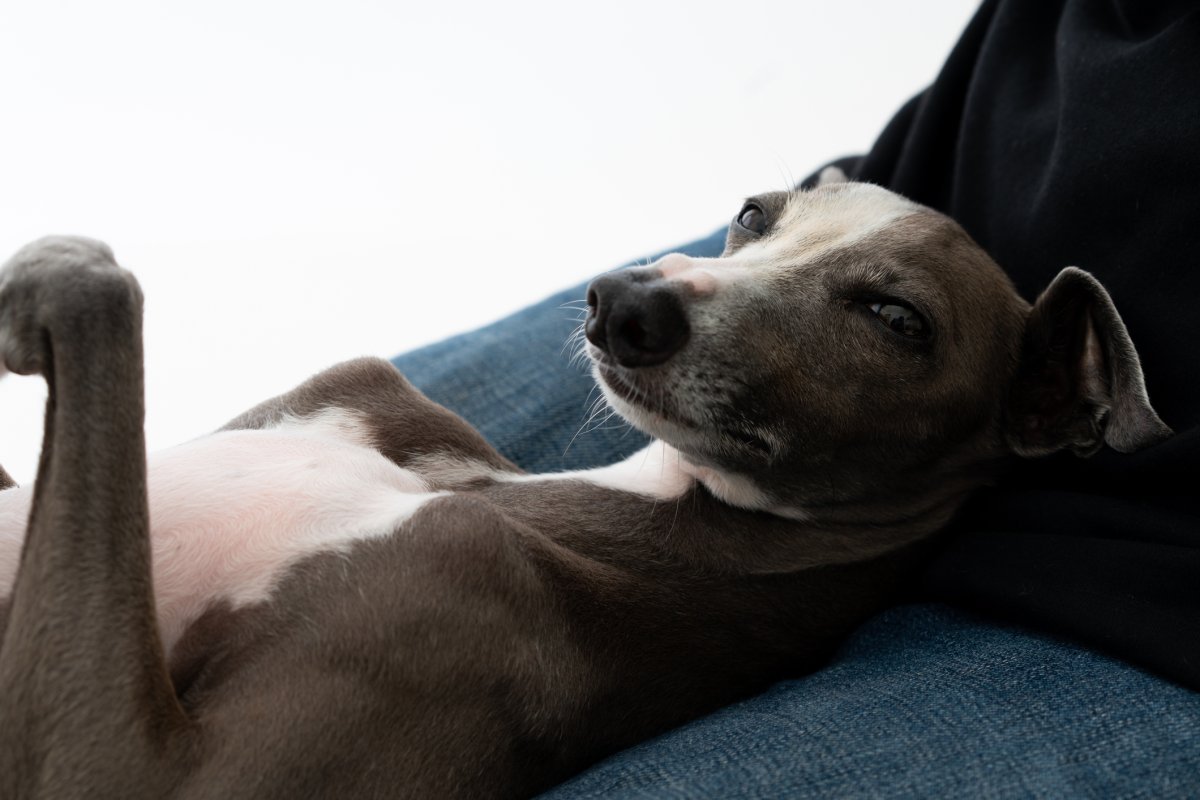
violet-blue/iStock/Getty Images Plus
Size: Small
Energy: Low
Noise: Low
Shedding: Low
Trainability: Medium
Italian greyhounds are slender dogs known for their elegant appearance and graceful movement. They have a playful side, but they can burn most of their energy outside in short bursts. After that, they’ll happily lounge on the couch.
These dogs also have sleek, fine coats that shed minimally. They’re great for apartments since they like staying indoors during the winter when the chilly weather doesn’t get along with their thin fur.
12. Labrador Retriever

Farinosa/iStock/Getty Images Plus
Size: Large
Energy: Medium
Noise: High
Shedding: Medium
Trainability: High
Labrador retrievers are another family dog that can do well in apartments, just like their golden retriever cousins. Their short coats come in black, brown and yellow—perfect for owners who want the affection and personality of a golden retriever without the long coat.
Labs need more exercise than most apartment dogs, but they also respond very well to training. You can take them to the dog park to burn off energy and teach them to relax at home.
13. Miniature Schnauzer

Elen11/iStock/Getty Images Plus
Size: Small
Energy: Medium
Noise: High
Shedding: Low
Trainability: Medium
Miniature schnauzers are a smaller version of the standard schnauzer. They’re perfect for anyone who wants the bold, playful personality of the standard size in a smaller, more apartment-friendly package.
Don’t let their bushy beards and eyebrows deceive you—miniature schnauzers have wiry coats that shed minimally. However, you should groom them regularly to avoid matting since they don’t discard excess hair as easily as other breeds.
14. Newfoundland
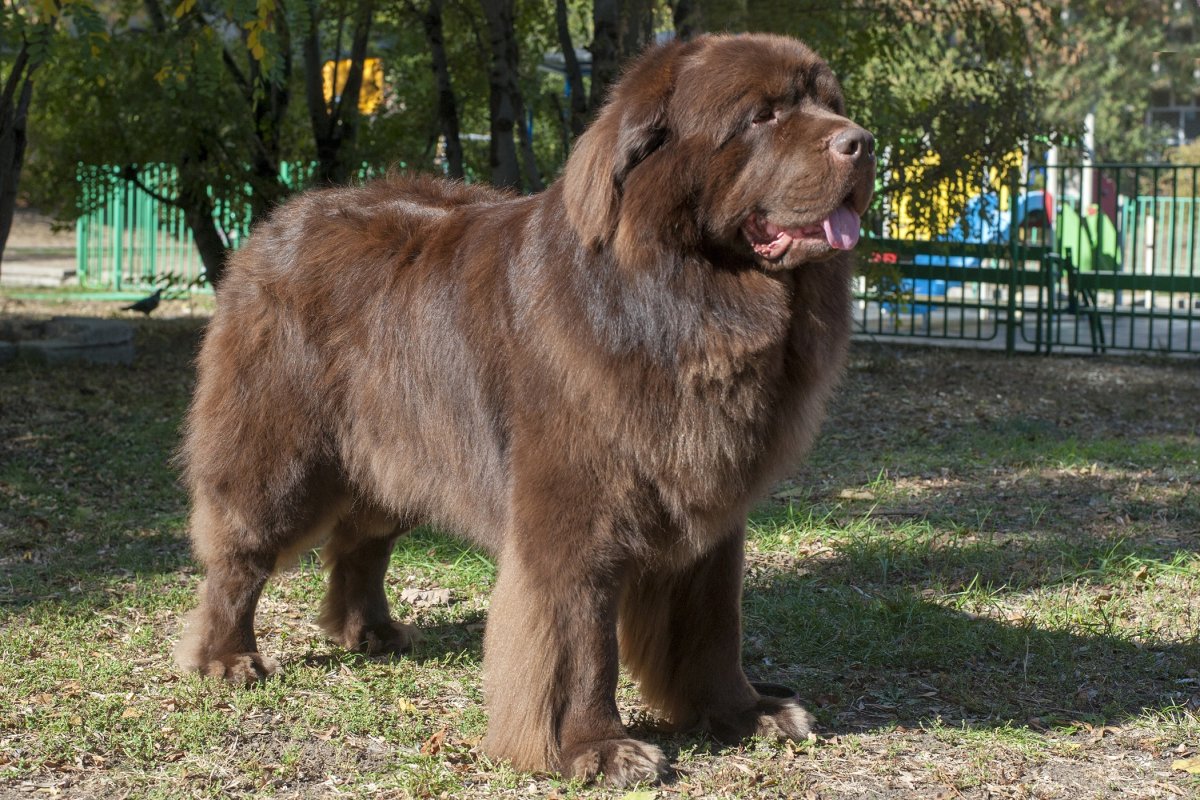
enduro/iStock/Getty Images Plus
Size: Large
Energy: Low
Noise: Medium
Shedding: Medium
Trainability: Medium
Like many big dogs, Newfies have the power to let out a mighty bark. Fortunately, they’re friendly, relaxed canines that don’t get worked up over much. Newfies can also spend most of their time napping, so you don’t have to worry about leaving your dog alone in the apartment when you go to work.
Newfies shed about average most of the year, but in the spring and fall they blow their coats. Make sure to schedule regular grooming appointments to keep excess fluff around your apartment to a minimum.
15. Rough Collie

Stewart Watson/iStock/Getty Images Plus
Size: Medium to large
Energy: Low
Noise: High
Shedding: High
Trainability: High
Rough collies started as herding dogs, so they have a loud bark that can get a human’s attention. However, they have great training focus. With enough mental and physical stimulation, they won’t start barking out of nowhere.
As double-coated dogs, rough collies can shed quite a lot. However, it’s nothing that regular brushing and grooming can’t fix.
16. Saint Bernard

swisshippo/iStock/Getty Images Plus
Size: Large to very large
Energy: Low
Noise: Medium
Shedding: Medium
Trainability: Medium
These gentle giants are famous for carrying barrels of brandy to Swiss avalanche survivors, but they’re just as comfortable cuddling on the couch as they would be in the Alps. These dogs are more likely to imitate your rug than bound off into the mountains.
Like their Newfoundland cousins, St. Bernards have thick coats suited for the cold. Make sure they get regular grooming to stay healthy.
17. Shih Tzu

SeventyFour/iStock/Getty Images Plus
Size: Small
Energy: Low
Noise: Low
Shedding: Low
Trainability: Medium
Shih Tzus were originally bred as companions for royalty in Tibet. However, they won’t mind if you don’t live in a castle. These affectionate, outgoing dogs are perfectly content on your lap.
Despite their luxuriously long coats, Shih Tzus don’t shed as much as you’d think. They’re small, clean dogs that get along fine in apartments.
18. Smooth Collie

PetrBonek/iStock/Getty Images Plus
Size: Medium to large
Energy: Medium
Noise: High
Shedding: Medium
Trainability: Medium
Smooth collies are elegant, athletic and intelligent dogs. They have more energy than other apartment-friendly breeds thanks to their herding backgrounds, making them great for athletic apartment dwellers.
Like their cousins, rough collies, smooth collies can shed a lot. However, their shorter coats make shedding less noticeable on the furniture.
19. Welsh Corgi

Ирина Мещерякова/iStock/Getty Images Plus
Size: Small to medium
Energy: Medium
Noise: Medium
Shedding: High
Trainability: High
Welsh corgis are famous for living in Buckingham Palace with the late Queen Elizabeth II, but they do just as well in apartments. Their small size makes it easy to burn off energy indoors and they’re extremely affectionate with their owners.
Welsh corgis are very vocal—they love to get your attention for whatever is happening in or around the apartment. Fortunately, these dogs respond very well to training, so you can teach your corgi to bark less often.
20. Whippet
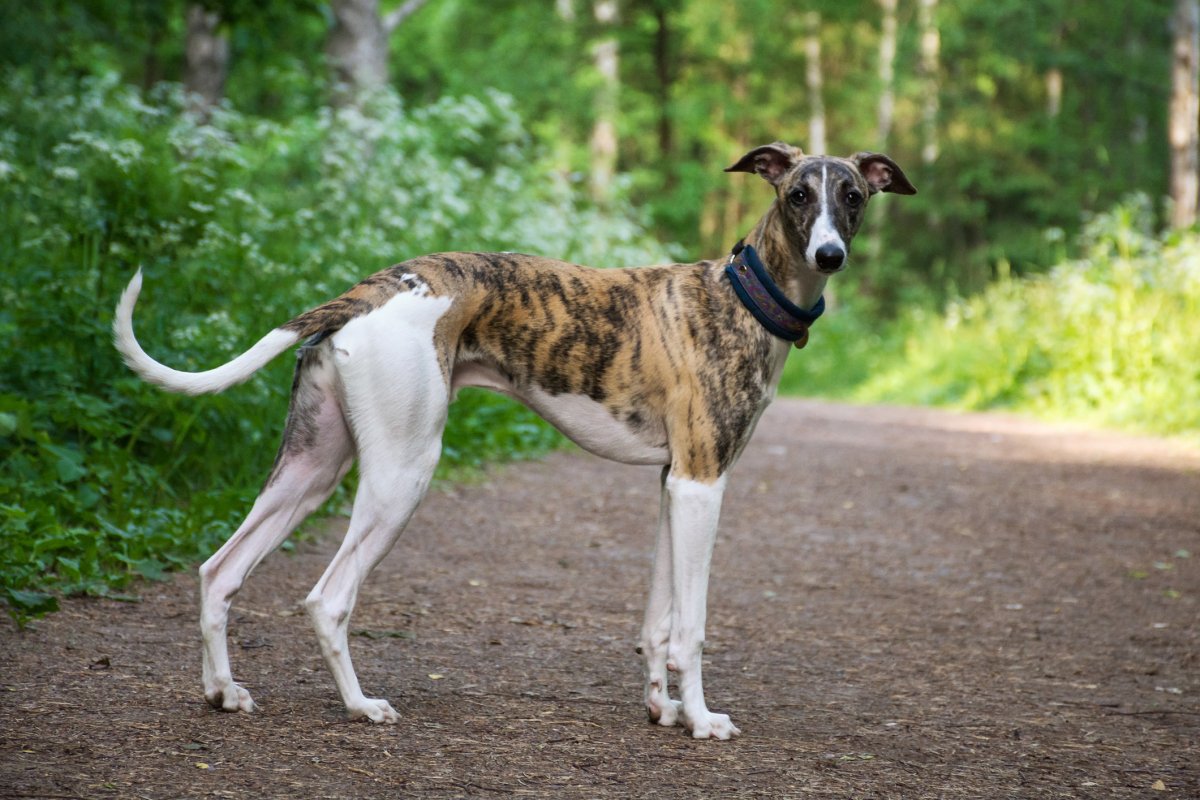
Natalia Timchenko/iStock/Getty Images Plus
Size: Small to medium
Energy: Low
Noise: Low
Shedding: Medium
Trainability: Medium
Resembling smaller versions of greyhounds, whippets have streamlined bodies, short, smooth coats and an elegant appearance. Despite their racing heritage, they’re calm and relaxed indoors, enjoying snuggling and lounging.
Whippets need regular exercise but are generally low maintenance in terms of grooming. They make affectionate companions and do well in apartments with a balance of exercise and relaxation.
Training Tips for Apartment Dogs
Even the most apartment-friendly dog breeds need some training to live well in small spaces. Focus on training these things to help your dog get along in your apartment:
- Potty training. Apartment dogs have longer to travel for bathroom breaks than house dogs, which may have a huge yard right outside the door. Start potty training at once and schedule plenty of outdoor trips with your pup.
- Limit barking. Dogs bark for many reasons, but you can train your dog to respond to stimuli less often. Make sure their needs are met to reduce demand barking and help them get comfortable, so they bark less at other people or animals.
- Socialize early. Your dog is liable to meet other dogs in a crowded apartment complex. Start introducing them to other dogs early so that they react peacefully when a new pup enters the neighborhood.
Keeping Your Dog Happy and Healthy in an Apartment
No matter where they’re living, dogs need plenty of mental and physical stimulation to live their best lives. Figuring out how to keep your dog engaged is especially important for apartment dwellers, whose dogs can’t simply run into the yard whenever they’re feeling playful.
Make sure to take your dog outside for a long walk at least once a day. With enough exercise, they’ll happily spend the rest of their time hanging out with you in the apartment.
Dog toys can also provide enrichment indoors. Try:
- Food puzzles
- Chew toys
- Lick mats
- Rope toys
- Ball toys large enough to prevent choking
Apartment Dog FAQs
Getting the right breed is just one part of finding a dog for your apartment. Find answers to these common questions about dogs and apartment living.
Can I Get a Dog That’s Not on This List?
Yes—almost any dog can live in an apartment, as long as you’re mindful of its needs. Some breeds are generally better for apartment living, but no two dogs are the same—even if they have the same breeding.
If you want a dog from a breed that doesn’t usually like apartments, adopt a senior dog. These dogs deserve love, and they often don’t get as much attention as puppies in shelters. They don’t need as much exercise and they’re more relaxed than younger canines, making them excellent for smaller living spaces.
Can Mutts Live in Apartments?
Absolutely. Mutts are just as good for apartment living as purebred dogs. They’re also healthier on average.
However, pay close attention to breed restriction lists. Apartment managers may ban dogs with perceived Pitbull or similar heritage, even if your dog isn’t purebred.
How Do You Find a Dog-Friendly Apartment?
Here are some tips to find an apartment where your dog can thrive:
- Read reviews. Tenants know best, and they can tell you how the dog experience is at the apartment you’re considering. Give extra weight to experiences with management and access to dog-friendly spaces, like parks and trails.
- Talk to other dog owners. Chat with other people at the park or in local groups for dog owners. Ask what apartments and real estate management companies they like, and which to avoid.
- Look at the amenities. Most dog breeds need outdoor time and exercise. A dog park on-site or a nearby trail network can help with that.
- Double-check breed restriction lists. Some dogs like rottweilers and German shepherds are predictable on breed restriction lists, but management companies may include something unexpected. Make sure your dog isn’t on the list before you sign a lease.
What If My Dog Is on the Apartment’s Banned Breed List?
Most of the time, breed restriction lists are final. But it doesn’t hurt to try negotiating with the landlord.
Ask the apartment manager to meet your dog. Breeding is a major factor in determining behavior, but it’s not the only thing that makes a dog well-behaved and calm. Use an in-person meeting to show the manager that your dog is not aggressive and won’t cause trouble.
What Are the Quietest Dog Breeds?
Small and quiet dogs are great for apartments if you’re worried about disturbing your neighbors. Consider these breeds:
- Basenji
- Bichon Frise
- Chinese Shar Pei
- Coton de Tulear
- Italian greyhound
- Shih Tzu
- Whippet
Can Large Dogs Live in Apartments?
Yes—large dogs can thrive in apartments. Some large breeds, like St. Bernards and Newfoundland dogs, are laid back and settle into whatever space you give them.
On the other hand, small breeds like chihuahuas and Yorkshire terriers can be loud and energetic, making it difficult to keep them in an apartment.
The bottom line is that size is much less important than temperament and energy levels. If you’re looking for an apartment-friendly pet, consider relaxed dogs of all sizes.
What Are the Worst Dog Breeds for Apartments?
Most dogs can learn to live in an apartment if they’re well-trained and their needs are met. However, if you have a small apartment without much access to canine amenities, you should avoid the following breeds:
- Australian shepherd
- Belgian Malinois
- Border collie
- Dalmatian
- Doberman
- German shepherd
- Jack Russell terrier
- Miniature pinscher
- Papillon
- Poodle
- Siberian husky
- Spanish water dog
Uncommon Knowledge
Newsweek is committed to challenging conventional wisdom and finding connections in the search for common ground.
Newsweek is committed to challenging conventional wisdom and finding connections in the search for common ground.
Signup bonus from





